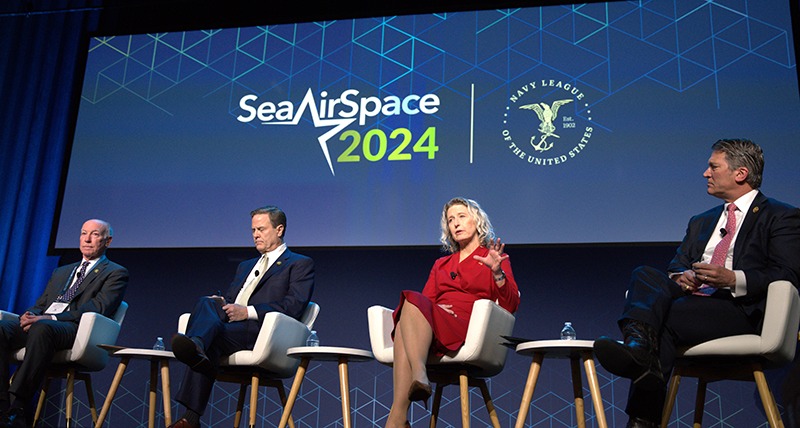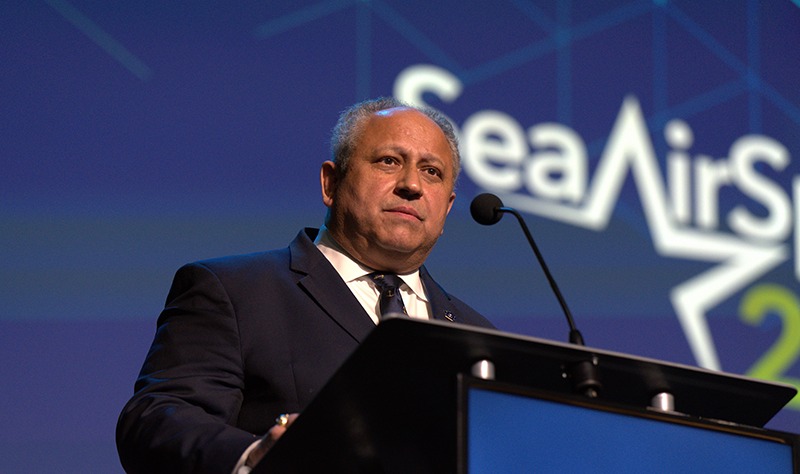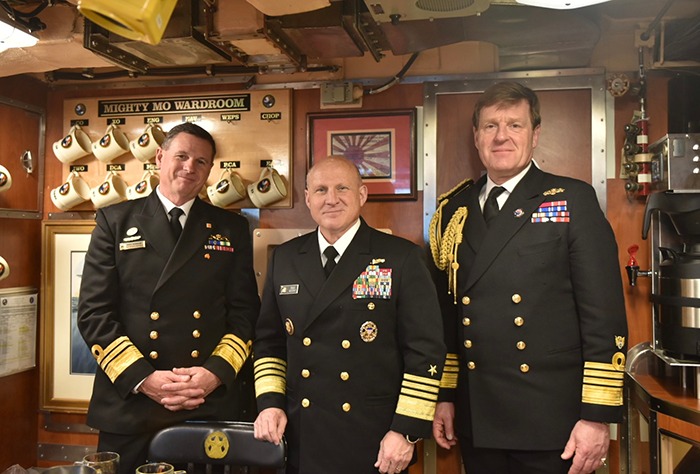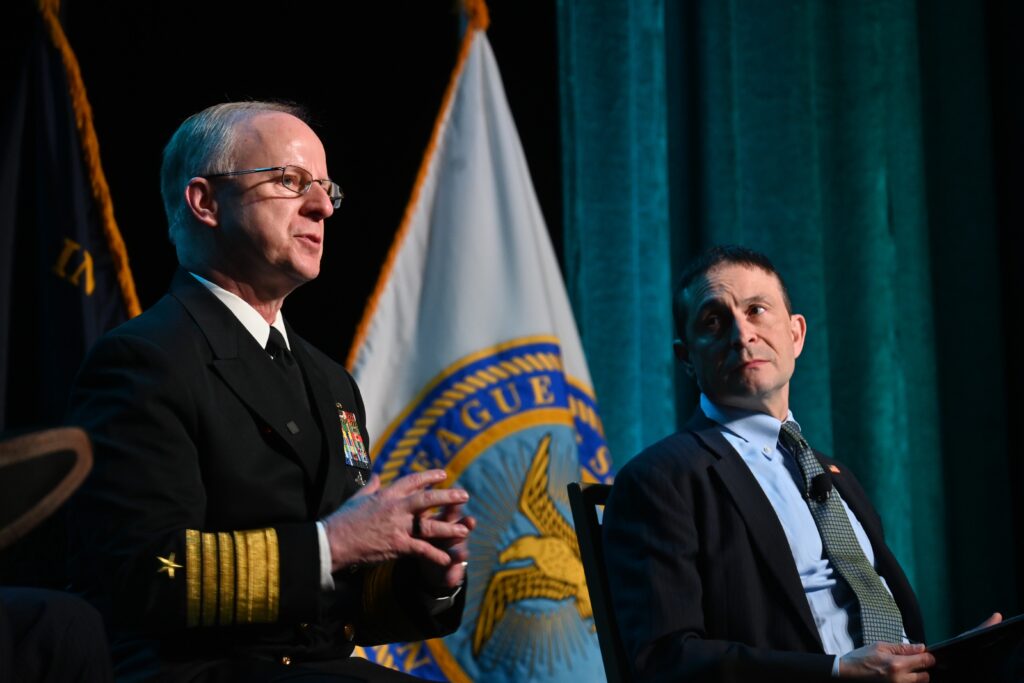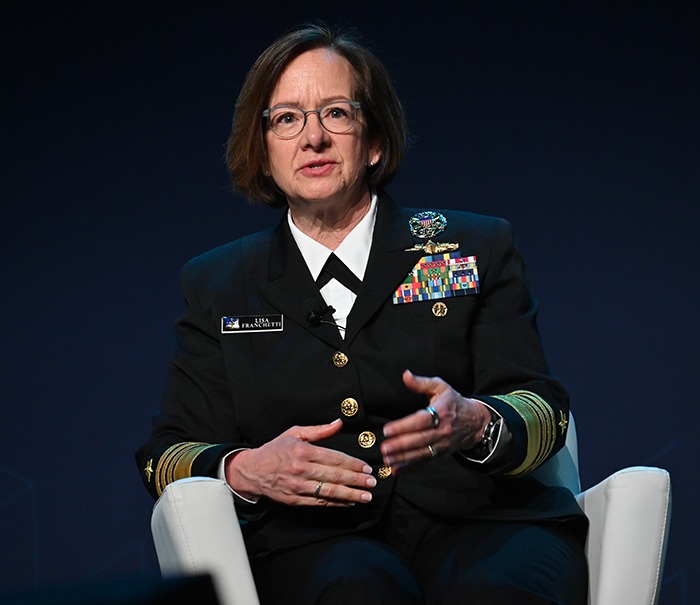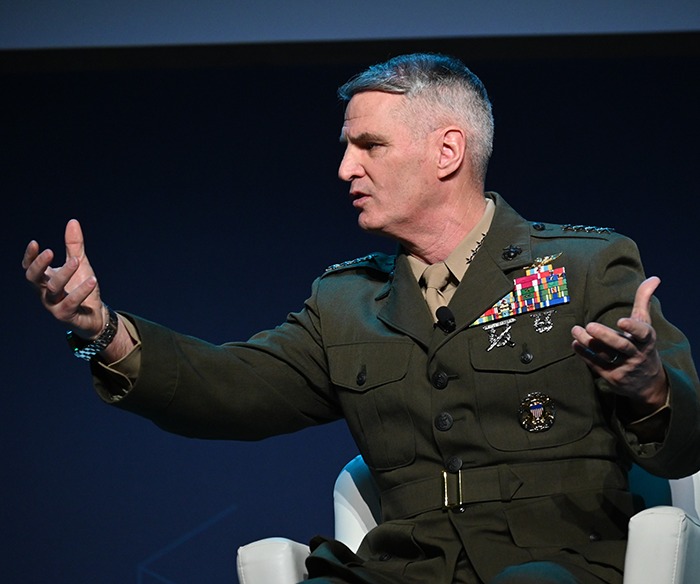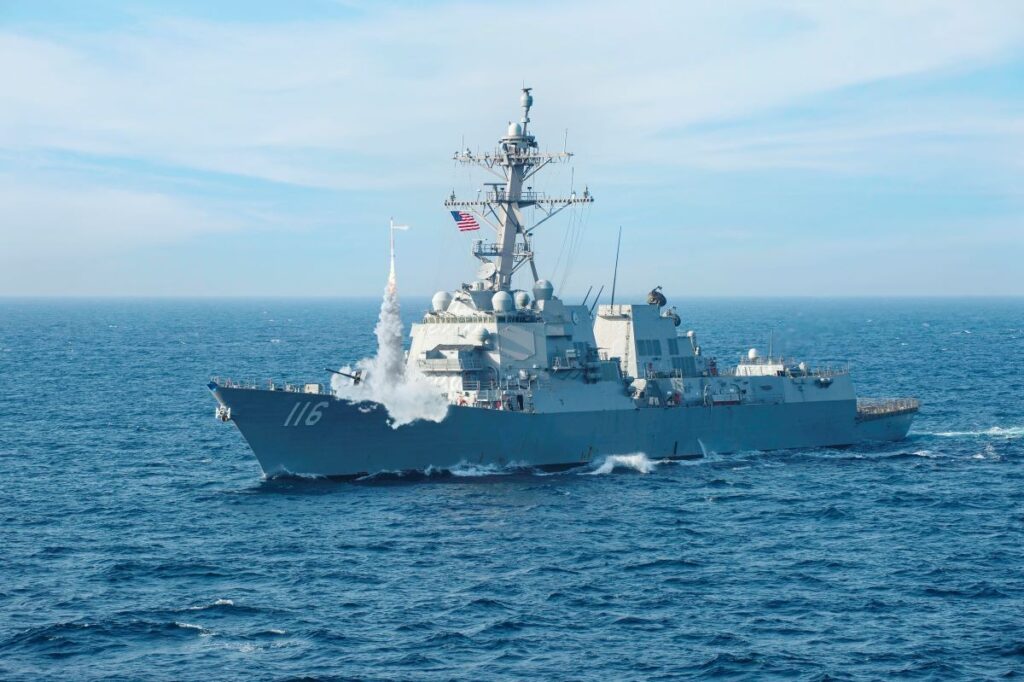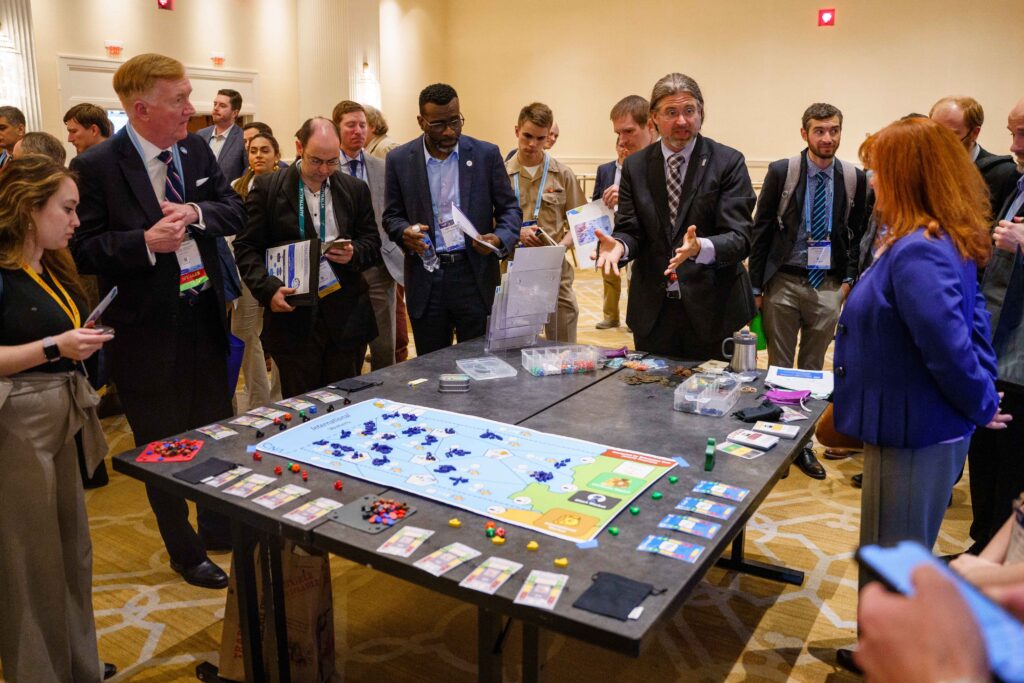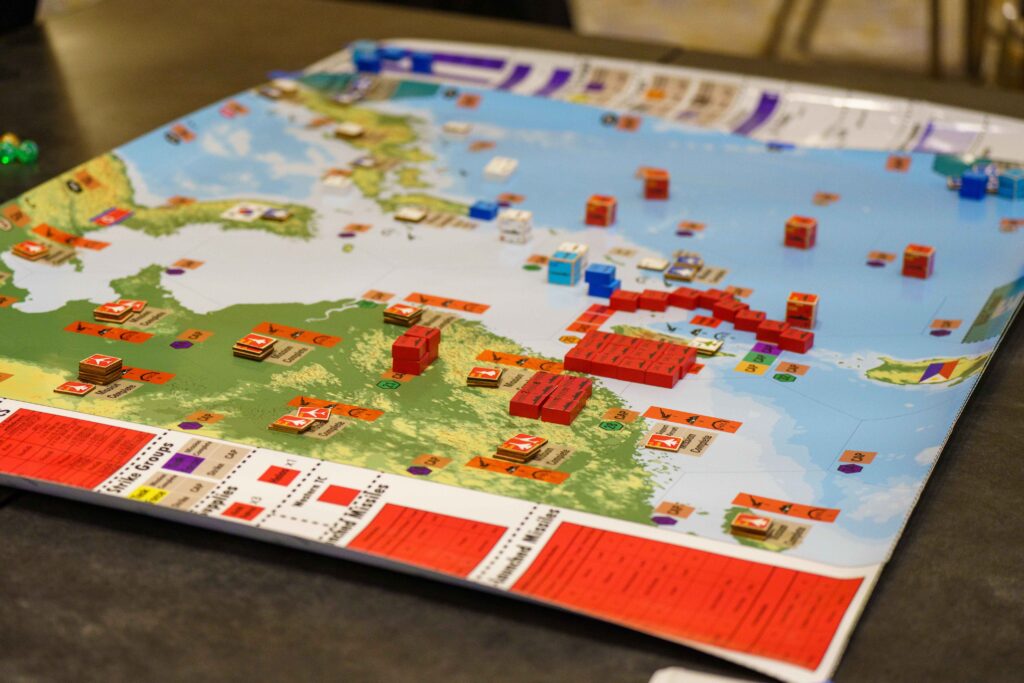Budget, Recruitment Challenges Drive Coast Guard Creativity, Officials Say
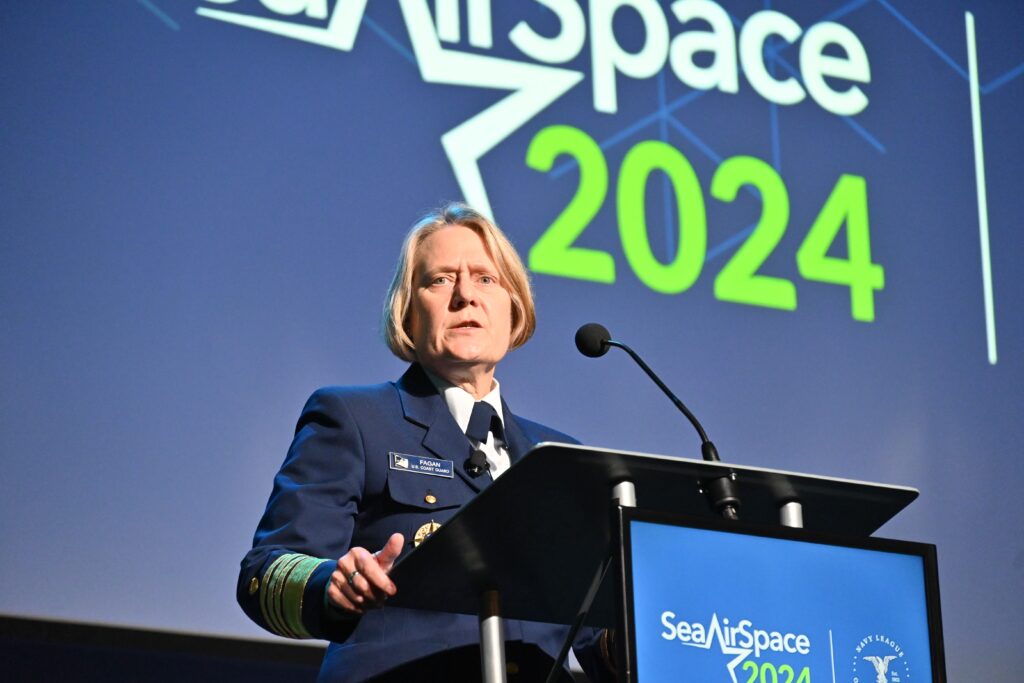
Challenges with budgets, recruitment and retention levels are giving the U.S. Coast Guard the opportunity to be creative in addressing them and to update its policies and procedures, service officials said at the fifth annual Coast Guard Breakfast at Sea-Air-Space 2024.
Coast Guard Commandant Admiral Linda Fagan said the service has about half the maintenance budget it needs to maintain its legacy ships and equipment and is competing with the other services for shipbuilding and other industrial base services.
On the personnel side, persistent shortfalls in recruiting and retention ꟷ the service is down about 10% for enlisted personnel, Fagan said ꟷ have forced the Coast Guard to innovate and rethink the types of workers it recruits and how it enables their career.
“That crisis has really given us the opportunity to think,” Fagan said. “It strikes me the system that we’re operating, and much like the other services, the boot camps and schools, they’re optimized for 18 year olds fresh out of high school with little to no life experience, yet that’s not the recruiting pool that we’re experiencing or drawing into the service,” Fagan said.
The service is moving to a vastly different recruitment method, bringing in people aged as much as “42 years young” with much more life experience, enabling much greater flexibility for service members with families and making it easier for guard members to leave the service and re-enter.
That’s what enabled Rear Admiral Jo-Ann Burdian, the assistant commandant for response policy, to even be on stage on Wednesday at Sea-Air-Space, she said. She left active service as a lieutenant commander because she had three kids under the age of two at home.
“And when they were ready for me to come back, I still felt that calling back. I still felt like I had work to do for our Coast Guard and the nation, and the ability to come back and still go to graduate school, still compete for special assignments and be sitting here today” is a testament to the Coast Guard, she said.
Rear Admiral Russell Dash, commander of the Personnel Service Center, noted “we don’t always do press releases when we change policy, but we were the first one that went to 42 years old to be able to join the Coast Guard,” preceding the Navy’s similar move.
Chief of Naval Operations Admiral Lisa Franchetti said on Monday at Sea-Air-Space that a parent and child could enter Navy service at the same time, one at 42 and one at 18, but Dash said the Coast Guard has actually had that happen.
He said the service’s previous philosophies needed to change to make such things happen.
“There’s the acknowledgement that our standard of every single member of the Coast Guard needs to be worldwide deployable at every moment of their career, and the moment that you’re not worldwide deployable, we start a shot clock and say, you’ve got to fix yourself and get to this point, or we’re going to separate you. That’s wonderful when we had lines out the door, a waiting list to join the Coast Guard. But in the competition for talent, we’ve got to accept that’s not a standard that is maintainable for us. So, that has given us the opportunity to drive innovation.”
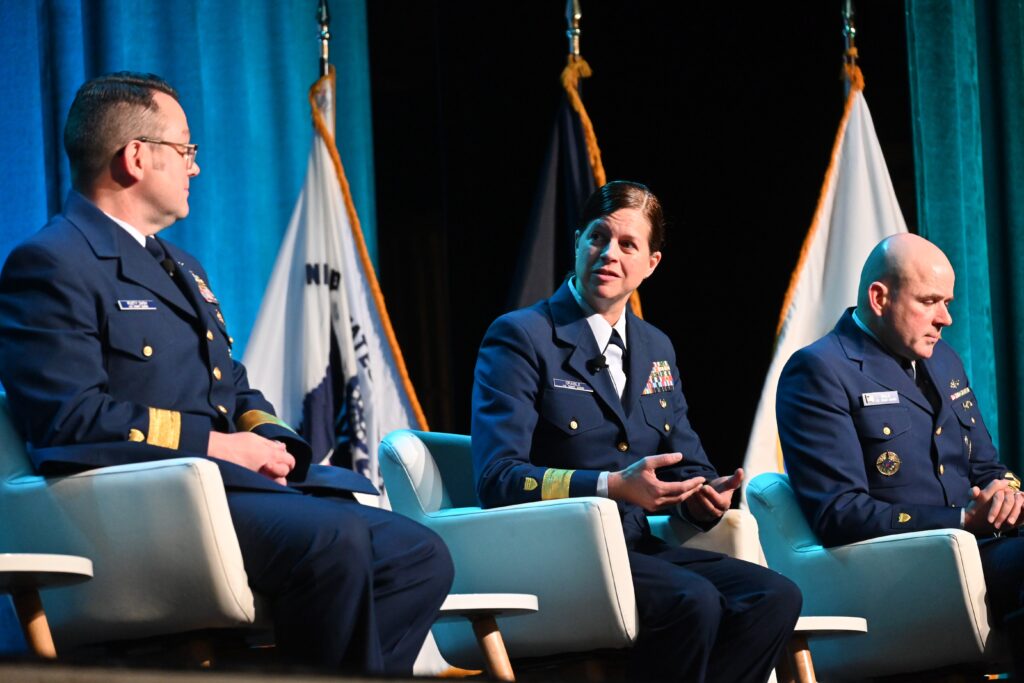
Maintenance
The service’s changes aren’t limited to personnel. To deal with that maintenance shortfall, the Coast Guard has gotten creative there as well.
“We do have shortfalls across all of our portfolios, including aviation, surface and shore,” said Rear Admiral Amy Grable, assistant commandant for Engineering and Logistics.
“We’re deferring 50% of our maintenance on many of our major cutters. And what that means to our crews is, what we used to call cannibalizing parts from one cutter to put on another cutter. It’s now so routine that we have a name for it, we call it a controlled parts exchange,” she said.
